Skin is one of the most important parts of the body, but they are rarely mentioned. Not only does it help animals avoid parasites and bacteria, but it also gives them a great sense of surroundings. The skin of animals varies in size or shape, but there are some species with very special skins with 1-0-2 in the world that give their owners special abilities. Here are the animals with the most special skin in nature.
1 Sperm whale - Has the thickest skin
Many animals such as crocodiles, rhinoceros or whale sharks possess very thick skin with a thickness of up to 15 cm, but it is still nothing compared to the skin of a sperm whale. The thickness of the sperm whale skin can be up to 35 cm, which is understandable because the sperm whale's favorite food is giant squid with razor-sharp tentacles, so they need a thick layer of skin like So for self-defense when hunting.
Sperm whales have a special body shape and are difficult to be confused with other species. Specifically, their heads are very large and blocky, which can account for 1/4 to 1/3 of their body length. The S-shaped stoma is located very close to the front of the head and slightly to the left side of the body. This structure gives the sperm whale a very dignified body, especially in the front.
The sperm whale's tail is triangular and very thick. When fish are about to dive deep in search of food, they swing their tails high out of the water. Sperm whales do not have a dorsal fin, but instead have a number of small ridges growing on their backs, the largest of which is called a "hump" by whalers and is often mistaken for the dorsal fin of a fish or fish. smaller elephants.
Sperm whales do not have smooth skin like most other large whales, on the contrary, their back skin is wrinkled, rough and often associated with the image of a dried plum. Sperm whale skin is normally a jet gray color, although in the sun it can appear brown. Albino sperm whales have also been recorded.
Female sperm whales usually go in groups of about 12 adults plus their offspring. Adult males leave the school when they are between 4 and 21 years old. Adult males sometimes travel in groups that are loosely related to fish of the same age and size. Older males are mostly solitary. Males have been reported to congregate near the shore together, suggesting that there is some degree of cooperation between them that is still poorly understood.

2 Crocodile - Skin that can detect swimming prey
Crocodile has long been famous for its thick, rough and durable skin, so it is widely used in the tanning industry. But few people think that crocodile skin is not only thick but also very sensitive to vibrations from the environment, it also has many sensors unlike other animals. The surface of crocodile skin is extremely sensitive, the skin from below the sides of the jaw stretched along the body can sense the smallest ripples on the water surface, so they can accurately locate prey even when hidden in the deep water.
Scientists believe that in the crocodile skin there are many chemical components that make it easier for them to find a suitable habitat, but they have not been able to find it and continue to study it in the near future.
Crocodiles are large aquatic reptiles that live over a wide area of the tropics of Africa, Asia, North America, South America and Oceania. Crocodiles tend to live in slow-moving rivers and lakes, their food is quite diverse, mainly living or dead mammals as well as fish. Some species, mainly estuarine crocodiles in Australia and the islands of the Pacific Ocean, are known to be able to swim far out to sea.
Large crocodiles can be very dangerous to humans. Estuary crocodiles and Nile crocodiles are the deadliest, killing hundreds of people each year in parts of Southeast Asia and Africa. The short-snouted crocodile and possibly the black caiman (an endangered species on the IUCN Red List) are also dangerous to humans.
Crocodiles are the most advanced of all reptiles, spawning eggs. Crocodiles have a 4-chambered heart, diaphragm and cerebral cortex. This feature makes it considered more evolved than other amphibians. Crocodiles are carnivores and excellent hunters with sharp teeth that can crush their prey in an instant. Their elongated body helps to swim faster. When swimming, they squeeze their feet close to the body to reduce water resistance. Crocodile feet are webbed, not to use a fan, but to use for sudden rapid movements or at the beginning of a swim. Webbed feet give crocodiles an advantage in shallow water, where land animals often pass.
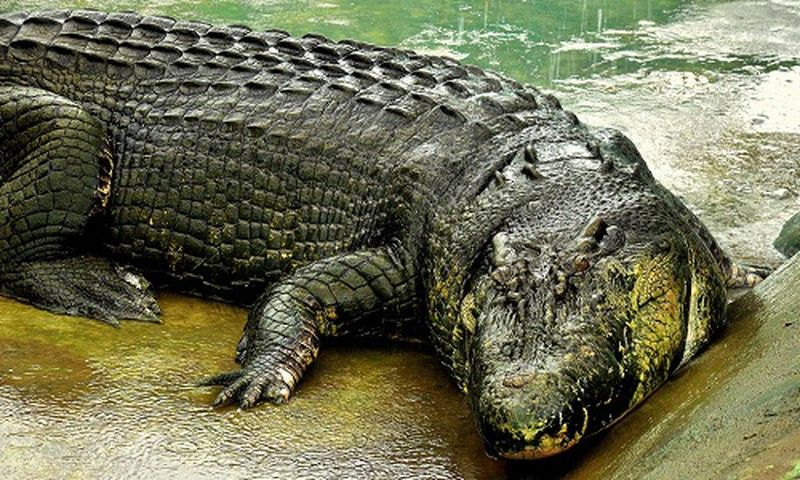
3 African spiny rats - The skin can repair itself
Some species have thick layers to protect their bodies, others do not, but the African spiny mouse is completely different. Their skin is very thin and easily damaged because the connective tissue under the skin is very weak, but the animals have a pretty special way of defending themselves by shedding their skin when caught.
In addition to the ability to shed their own skin, the African spiny mouse also has the ability to regenerate its own skin like Wolverine. They can completely regenerate the skin, hair follicles, sweat glands in just a few days and leave no scars. Even with a fairly severe wound, they can recover intact.
Due to the soft cuticle beneath the skin of this rat, it is easy for it to shed the old skin. The skin of the African spiny rat showed it to be about 20 times weaker and 77 times easier to tear than the skin of a lab rat. The easy tearing of the African spiny mouse can help it escape predators, such as snakes, owls and eagles. When attacked, they are ready to leave part of their skin to escape
Besides, African spiny rats also possess the ability to self-heal, regenerate skin, hair follicles, sweat glands and cartilage within a few days without leaving scars. If injured, the next day, the wound can be reduced by up to 64%, so any skin tear, no matter how large, affects the spiny mouse. Especially, after that, the mice were able to recover the lost skin quickly, within 3 days, without leaving scars. After about 30 days, the length and color of the skin is completely restored.
In one experiment, about 60% of the skin was peeled off on the back of mice, but then the lost skin regrows very quickly and the hair also grows back on the new part to regenerate a 4mm long wound that can heal. in 3 days, while guinea pigs took 5 to 7 days to heal a similar wound[3] which indicates that they did not regenerate all the lost skin. They use the elasticity of the skin to cover the injured site so they don't really have to regenerate as much. In the central part of the wound, about 5% of the skin remains unregenerated.
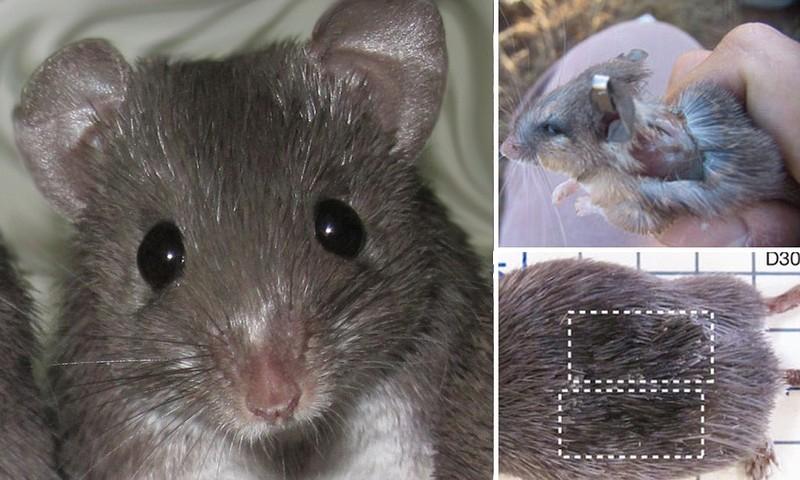
4 Thorny Lizard - The skin can hold water
The spiny lizard or Moloch lizard lives in the deserts of Australia, they have a skin covered with thorns for self-defense and camouflage to adapt to the harsh desert life.
The special feature on the hip spine lizard skin is not in the sharp spines but the unique ability to hold water. Their thorny and rough skin has the ability to absorb water very well thanks to the capillary system under the skin, this capillary system is like a tube that absorbs water and then transfers it directly to the mouth. Thanks to this special ability, the spiny lizard can adapt well in arid environments.
Their diet consists of ants and often eats thousands of ants every day. They suck up rare drops of water in the desert through dew condensation on their bodies at night. The amount of water vapor that accumulates is large enough to form dewdrops and is then delivered to the mouth through desiccant grooves between the spikes. During heavy rains, active capillaries allow the gecko to draw water from all parts of their body.
Covering their entire body are sharp shaggy spines that help protect it from predators. They have the ability to camouflage in the desert and sway when it moves. They can grow up to more than 20 centimeters (8.0 inches) in length, and live up to 20 years. The thorny body makes it difficult for predators to eat this species. They have a false head in the upper part of the neck. When it perceives a threat, it tucks its head between its forelegs, and then displays its false head as a distraction.
In addition, the spiny lizard is covered with sharp spines to thwart an enemy's attack by making it difficult to swallow. It also has a prosthetic head on its back. When it feels threatened by another animal, it puts its head between its front legs, then pulls out the prosthetic head.

5 Zebra - Functional skin repels flies, mosquitoes and insects
Many theories suggest that the alternating black and white stripes on the body of this animal are used to camouflage or create an illusion to deceive the enemy, but that is not true. According to scientists, these stripes of zebras have the function of repelling flies, mosquitoes and insects. These black and white stripes will make the light reflected off the zebra's body extremely annoying to the insects, and so they will stay away.
In addition, stripes also work as visual signals and identification, helping to reduce the risk of getting lost. Although the striped pattern is unique to each individual, zebras can also identify herds by the stripes on their bodies. In addition, zebra stripes are also used to cool the zebra's body. Air can move faster through the black stripes that absorb light while moving more slowly through the white stripes. This creates convection currents around which keep the zebras cooler. One study also analyzed that the more stripes a zebra has, the more likely it is to live in hotter environments.
Zebras' unique stripes make them one of the animals most familiar to man. They occur in a variety of habitats, such as grasslands, grasslands, open forests, thorny scrublands, mountains and coastal hills. However, various human factors have severely affected zebra populations, particularly poaching and habitat destruction. Grevy's zebra and mountain zebra are both threatened with extinction. While populations of the plains zebra are very large, a subgenus of this clade, the Quagga, became extinct in the late 19th century - although there is now a project called the Quagga Project underway to breed the species. Zebras are phenotypically similar to Quagga by a process called breed recovery.
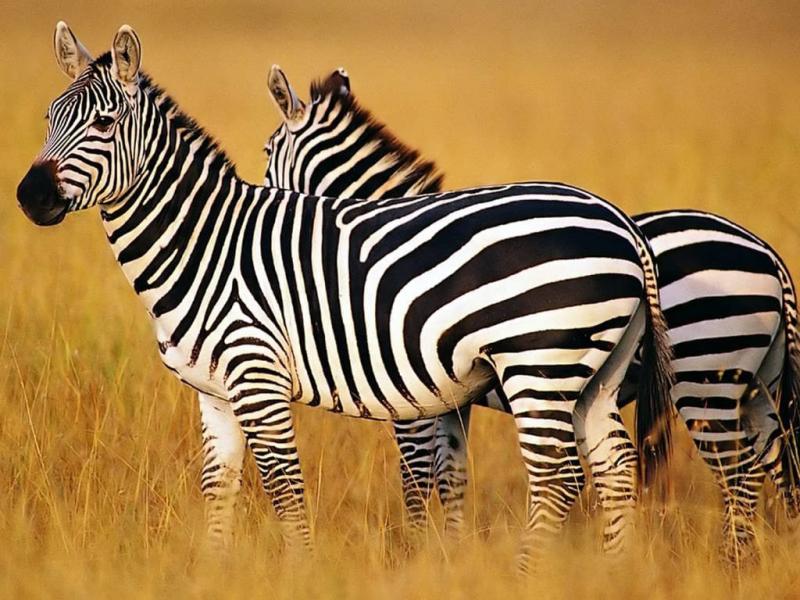
6 Octopus and squid - Skin changes color for camouflage
Octopus and squid are both molluscs, but they both have a very unique point: the skin can change color continuously. Their skin has the ability to change color instantly in any environment, helping them camouflage to catch prey or escape in the most perfect way. However, scientists have not yet been able to figure out why squid and octopus are able to perceive colors from the environment while they are in color season.
It is theorized that their skin's ability to sense color is thanks to a protein called Opsin that helps all animals perceive color, but in squids and octopuses, Opsin is present in their skin. instead of in the eyes. Perhaps the most convincing explanation today is that their skin has a very good ability to perceive light.
The three typical defense mechanisms of an octopus are inkjet, camouflage, and self-tassel detachment. Most octopuses can spit out a thick, blackish ink like a large cloud to escape predators. The main ingredient of that ink is melamine, which is also the chemical that gives human hair and skin color. This ink also masks the smell, making it easier for the octopus to hide from bloodthirsty predators like sharks.
Octopuses camouflage thanks to specialized skin cells that can change the color, opacity and reflectivity of the epidermis. The pigment cells contain yellow, orange, red, brown, or black colors; some species have 3 colors, others have 2 or 4.[12] Other color-changing cells could also be used to communicate or warn other octopuses. The poisonous blue octopus will turn bright yellow when provoked.
Some species of octopus have the ability to detach their tentacles when attacked like a lizard. Loose tassels help distract enemies. Some octopuses, like the Mimic octopus, have a fourth defense. They can change their flexible body and color to resemble more dangerous animals like sea snakes or eels.
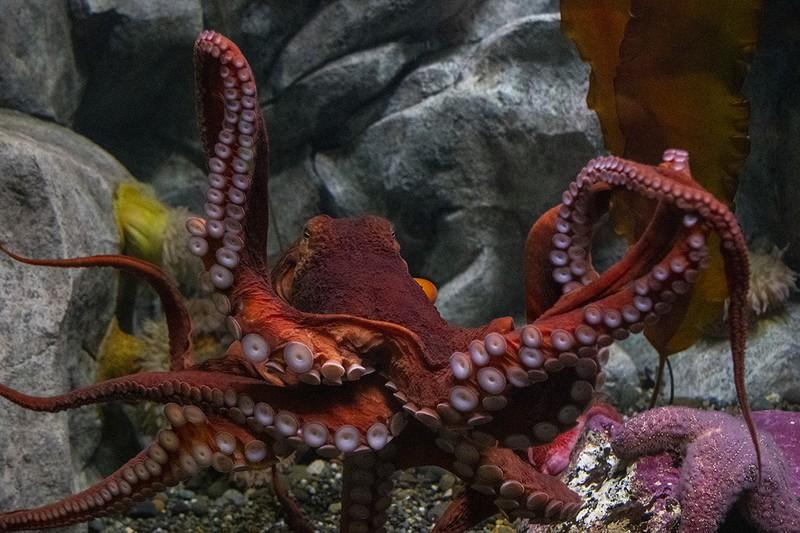
7 Giraffe - Skin functions like an air conditioner
The whole body is covered with uneven spots on the yellow to black coat divided by white, off-white, yellow-brown. The giraffe often lives in the deserts, savannas in Africa - where temperatures and living conditions are very harsh. While other animals have to rely on water or shade to cool their bodies, giraffes do not because of their large body size. Instead, the giraffe's skin is like an air conditioner that helps regulate their internal body heat.
According to scientists, the skin of giraffes has dark spots, they are like a window to escape heat. Under these dark spots is a complex vascular system with large blood vessels at the edges, which can identify cool winds or wait for the ambient temperature to cool down to cool themselves. Giraffes also have more skin than animals of the same weight, so they can cool better.
The skin of the giraffe is mostly gray, or tanned. Its thickness allows the animal to run through the thorns without being punctured. The coat can serve as a chemical defense, as its parasite repellent gives the animal a distinctive scent. At least 11 major aromatic chemicals are present in feathers, although indole and 3-methylindole are responsible for most of the odor. Because males have a stronger odor than females, this smell can also have a sexual function. Along the animal's neck is a mane made of short, erect hairs. The one meter (3.3 ft) long tail ends in a long, dark tuft of hair and is used as a defense against insects.
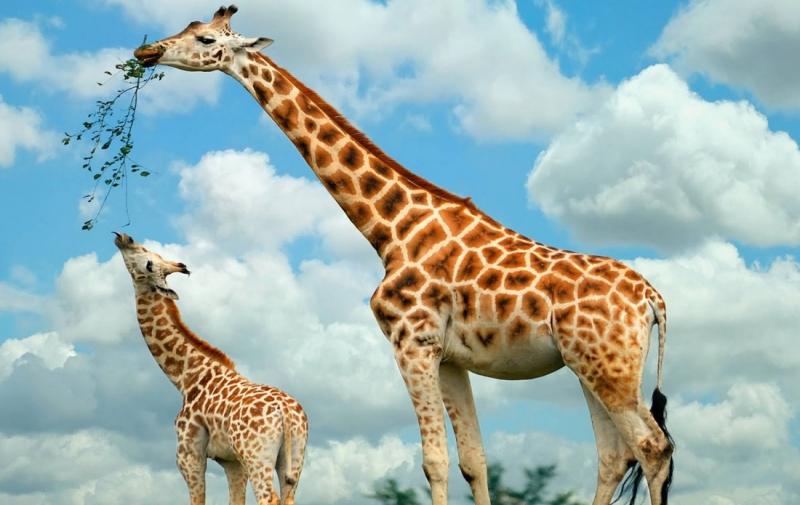
8 Bornean Frogs Breathe Through Skin
These are quite special animals because they have no lungs or gills, but the special thing is that they use their skin to breathe.
Although breathing through the skin is not the best method, this frog has a low metabolic rate so it doesn't need too much oxygen. Besides, they live in cold waters that help retain oxygen longer than other animals.
Researchers have not yet been able to explain why this frog has no lungs, it is hypothesized that they live in fast-flowing water and that carrying an air sac around them makes them very susceptible to water. washed. This aquatic frog lives in cold, clear and fast-flowing rivers in remote areas of the Kalimantan rainforest, the Indonesians part of the island of Borneo. It is known from only two localities, both the Kapuas River basin.
This frog grows to a snout-to-hole length of 77 mm (3.0 in) in females and slightly smaller males. It has a flattened back body with a broad head with a rounded muzzle. The limbs are healthy, both hands and feet are webbed. The dorsal skin is smooth with jab marks on the hindquarters and hind legs, and the belly skin is smooth. Its general color is brown with black spots.

9 Sea slugs - Able to photosynthesize through the skin
The green sea slug is the most special animal on Earth, it only eats algae and has a body like a leaf. After eating a few meals, they turn green and begin to have the ability to absorb solar energy like photosynthesis in plants to create energy for the body.
The difference here is that sea slugs have the ability to absorb the chlorophyll in the algae and transfer it to their skin. Scientists believe that this particular species of slug has the ability to change the structure of DNA to incorporate the DNA of algae into the DNA structure of their body. After having loaded enough algae needed and started to carry out the process of photosynthesis, they do not need to eat but only need to absorb sunlight and this helps them not to excrete.
Sea slug is the common name for these marine invertebrates and has a slug-like appearance. Most sea slugs are gastropods, undergoing evolution with their shells reduced or completely lost. The term "sea slugs" is mostly used to refer to nudibranchs and other groups of paraphyletic non-shelled gastropods.
Sea slugs are very diverse in size, color and shape. Most of them are partially transparent. The vibrant colors of coral reef species indicate that they are constantly threatened by predators, but it is also a form of warning to other animals that they are poisonous (sting cells) or has a disgusting taste. Like all gastropods, they have small, razor-shaped teeth (radula). Most sea slugs have a pair of tentacles on their heads (rhinophores), which act as olfactory bulbs, and their eyes are located at the base of these two tentacles. Many species have feather-like structures (cerata) on their backs, often of a contrasting color, that act as gills. All true sea slugs have specialized prey, such as jellyfish, bryozoa, anemones, and plankton, or possibly other sea slugs.
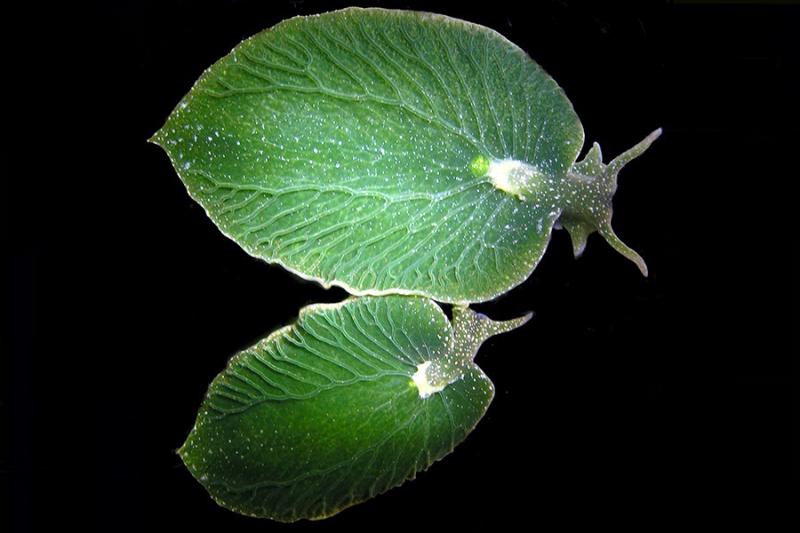
10 Chameleons and Camouflage
Like octopuses and squid, chameleons can also change the color of their skin to camouflage themselves. However, this ability also helps them regulate their temperature and communicate with each other. But chameleons have one more special ability than "camouflage depending on the enemy".
When enemies get close, they will change color depending on the outside environment. For example, if they encounter a bird of prey, they will change color to blend in with their surroundings, but for some other species they will turn colorful. Somehow, chameleons know their enemies well, being the first animal to use different types of camouflage depending on different types of enemies.
They have the ability to change skin color including pink, blue, red, orange, turquoise, yellow, and green. Color is a language used to defend territory, express emotions, and communicate with potential mates. It is also a means of regulating body temperature. The way chameleons change color is interesting: Cells that contain a lot of pigment are located under the skin and can "open" and "close" to reveal color. For example, when angry, chameleons open cells containing the brown pigment - melanin, helping to turn it dark. When it relaxes, cells containing yellow or green pigments combine, giving the skin a soft blue color. When sexually aroused, chameleons produce a wide variety of colors and patterns. At night, many chameleons turn white.
Chameleons have flattened bodies, which facilitate easy movement through tree branches and allow them to efficiently absorb heat in the morning and evening by directing their body towards the Sun. Uniquely adapted for climbing and visual hunting, about 160 species of chameleons range from Africa, Madagascar, Southern Europe, throughout South Asia, Sri Lanka; has been introduced to Hawaii, California, Florida, and is found in warm habitats ranging from rainforest to desert.

Above are the top animals with the most special skin in nature today that Toplist learns and provides to readers. Follow along to know more interesting things about the animal world in the following articles.










